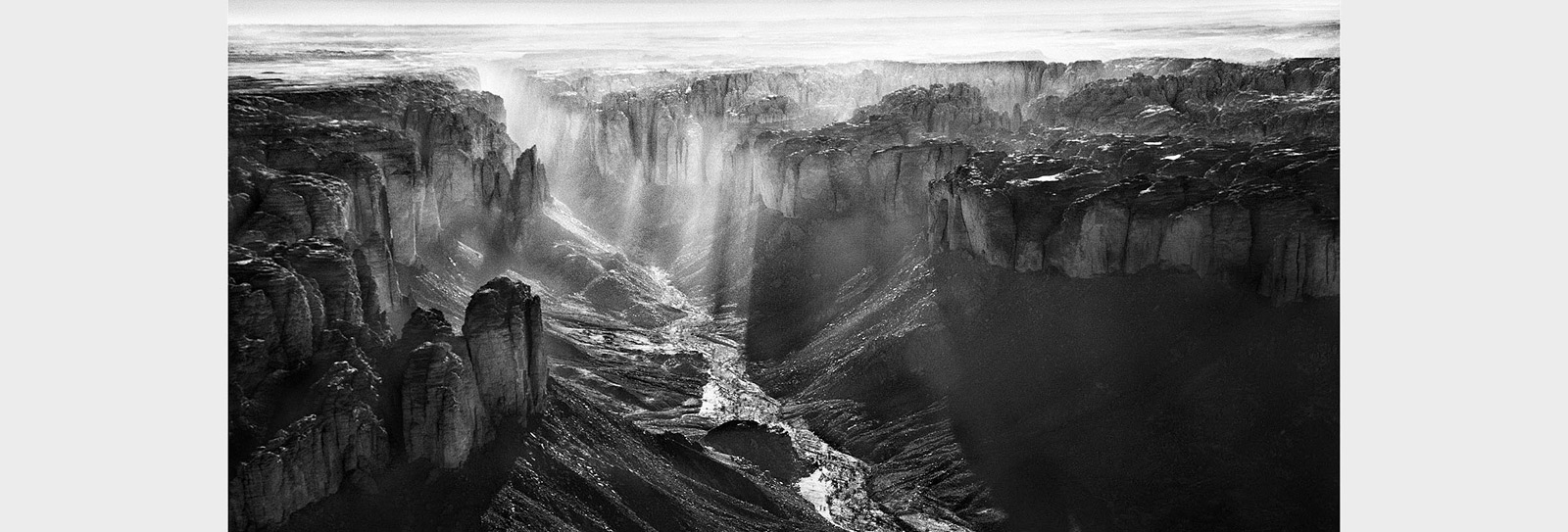
FirstLook: Tassili n’Ajjer National Park
At first impression, the Sahara appears to be lifeless, with golden sand dunes stretching out as far as the eye can see. Yet it is one of the places where I have felt closest to the past of humanity. —Sebastião Salgado
At first impression, the Sahara appears to be lifeless, with golden sand dunes stretching out as far as the eye can see. Yet it is one of the places where I have felt closest to the past of humanity.
We were fortunate during this part of a journey in southeast Algeria to have a helicopter made available by the Algerian army for some 12 hours over Tassili n’Ajjer National Park, a UNESCO World Heritage Site of outstanding scenic, historical and geological interest. It has one of the largest and best-preserved groupings of prehistoric cave art in the world, more than 15,000 drawings and engravings that record climatic changes, animal migrations and the evolution of human life on the edge of the Sahara from 8,000 to about 1,500 years ago. It is also, in parts, an island of life that harbors the endemic Saharan cypress, one of the rarest trees in the world.
From on high, it was possible to see how this vast plateau ends abruptly in what resembles a cliff face that in turn is slowly being eaten away by erosion. As compacted sand disintegrates, it adds to the desert. In other areas, deep ravines have been cut through the plateau by rivers that flowed thousands of years ago.
—Sebastião Salgado
You may also be interested in...

Peter Sander's Spiritual Photography
Arts
For more than 40 years, British photographer Peter Sanders has documented communities across the Islamic world. Sanders discusses his legacy with us, including his inspiration and influences over the course of his career.
Spotlight on Photography: Relive the 1980 Grand Prix Through Michael Turner's Racing Photos
Arts
Amid the roar of racers zooming toward the finish line in London during the 1980 Grand Prix, longtime auto-racing photographer and renowned artist Michael Turner trained his lens on a Saudia-Williams FW 07.
Spotlight on Photography: Finding Frozen Fun in Kyrgyzstan
Arts
Culture
In the winter of 2020, Lake Ara-Köl in Kyrgyzstan was becoming more and more popular.